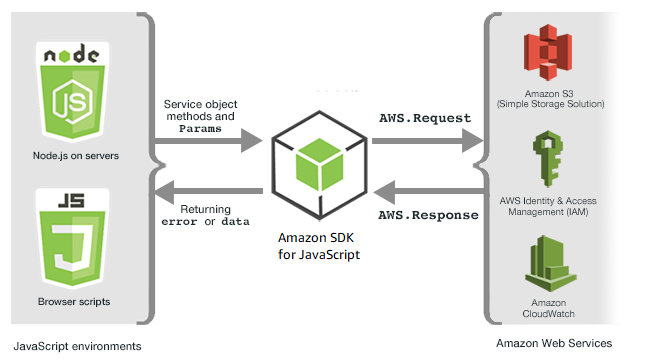We announced
Working with Services in the SDK for JavaScript
The AWS SDK for JavaScript provides access to services that it supports through a collection of
client classes. From these client classes, you create service interface objects, commonly
called service objects. Each supported AWS service has one or more
client classes that offer low-level APIs for using service features and resources. For
example, Amazon DynamoDB APIs are available through the AWS.DynamoDB class.
The services exposed through the SDK for JavaScript follow the request-response pattern to exchange messages with calling applications. In this pattern, the code invoking a service submits an HTTP/HTTPS request to an endpoint for the service. The request contains parameters needed to successfully invoke the specific feature being called. The service that is invoked generates a response that is sent back to the requestor. The response contains data if the operation was successful or error information if the operation was unsuccessful.

Invoking an AWS service includes the full request and response lifecycle of an operation
on a service object, including any retries that are attempted. A request is encapsulated in
the SDK by the AWS.Request object. The response is encapsulated in the SDK by
the AWS.Response object, which is provided to the requestor through one of
several techniques, such as a callback function or a JavaScript promise.